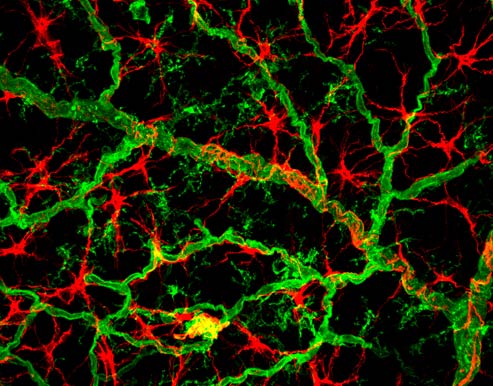Structural information
Light sheet Fluorescence microscopy has proven to be a powerful tool to image developmental processes in vivo with fast, high-resolution optical sectioning over large volumes. However, an intrinsic limitation of all fluorescence microscopy techniques including SPIM) is their inability to image unlabeled structures. The fluorescent structures therefore appear out of context of the sample’s anatomy, and features such as the growth or migration of fluorescent tissue through the surrounding structures may therefore be hard to interpret. The anatomy of fixed samples is commonly visualized by imaging autofluorescence, but this requires higher laser power that may lead to phototoxicity. It is therefore desirable to find a technique that delivers structural information of the unstained tissue to complement the fluorescence data.

Optical projection tomography (OPT; Sharpe et al., 2002) had been developed to exploit the bright-field contrast of the sample by acquiring several light transmission images (or projections) from different directions; the 3D structure of the sample is then reconstructed using a back-projection algorithm. Therefore, optical projection tomography can be used as a valuable tool to observe the entire anatomy of translucent living organisms, complementing and improving the analysis of SPIM data. Our unique technology allows obtaining a structural 3D image using white light (OPT) and combining it with specific information from a light sheet fluorescence microscopy image. As an example you can see a 3D reconstruction of a mouse lung sample. The optical tract is fluorescently labeled, while the surrounding organ is imaged from white light absorption.